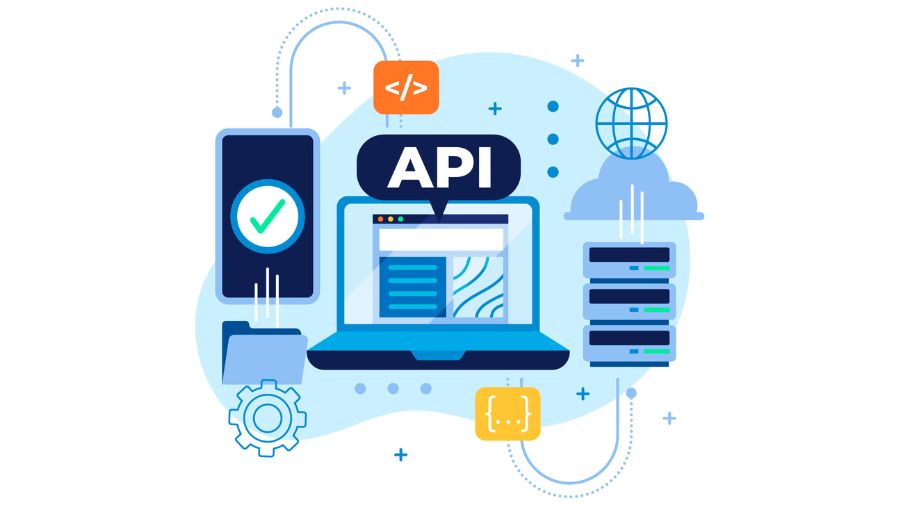Scalability is a critical factor for every web application development. It’s not only about handling more users, it’s also about maintaining speed, performance, and reliability as your business grows. As user demand rises while businesses expand, scalable web architecture becomes vital for maintaining the essential elements, i.e., performance, reliability, speed as well as cost-efficiency.
In this blog, we’ll explore what scalability really means in technical terms, why it’s a crucial factor for modern applications, and the key challenges developers often face when building for scale.
Furthermore, we’ll also cover vital strategies like choosing the right tech stack, adopting microservices, optimizing databases, utilizing caching, and DevOps integration practices. If you’re working with top app development companies in Mumbai or wherever, these insights are valuable.
Scalability determines success: 53% of users abandon slow apps (Google). These metrics prove why it matters:
| Scalability Factor | The Fact |
| Slow Loading | 53% of users abandon instantly (Google) |
| Monolithic Architecture | 40% more crashes (CNCF) |
| Unoptimized Databases | 90% slower performance (MongoDB) |
| Manual Scaling | 60% lower cloud costs (AWS) |
| No Caching | 10x faster content (Fastly) |
| Poor Monitoring | 92% of issues caught early (Dynatrace) |
Table of Contents
ToggleWhy is Scalability Critical in Modern Web Apps?
A web application needs scalability as a mandatory requirement since growth expectations have become inevitable today. A scalable application with these features provides uninterrupted service when the user demands change and when the application grows or infrastructure transforms. Web development today strongly relies on scalability for these reasons:
- High User Demand & Traffic Spikes: A scalable application maintains a smooth user experience throughout peak usage times and essential events by effectively managing spikes in user demand without system failures.
- Business Growth & Expansion: Scalable web applications provide easy integration of new features as well as service additions, which avoids necessitating significant system alterations for business growth and expansion.
- Cost-Efficiency Over Time: The early investment into scalable infrastructure minimizes future redesign requirements while efficiently utilizing resources by addressing infrastructure demands as they emerge.
Common Bottlenecks That Hurt Scalability
When key architectural decisions are overlooked, even well-built applications could significantly struggle with scalability. Identifying and resolving these bottlenecks earlier can prevent performance issues and downtime as your web application scales. The major bottlenecks that can hurt scalability are:
- Poor database structure: An unoptimized database with redundant tables, missing indexes, or even poor normalization could significantly slow down queries as data grows. Without thoughtful schema building and proper indexing, performance can be degraded, which’ll make real-time responses harder to maintain under load.
- Monolithic architecture: In a monolithic system, all components are tightly paired, which makes it complex to scale individual services independently. If there is a single failure in one module, it can impact the entire application, and scaling sometimes demands replicating the whole system, leading to inefficiencies as well as higher costs.
- Inefficient API integrations: APIs that return excessive data, take long response times, or even lack proper error handling can create several serious performance lags. As the number of external and internal API calls increases, these inefficiencies compound and severely impact scalability as well as user experience.
- Lack of caching and load balancing: Without catching, repeated requests are unnecessary strain on servers, and without load balancing, traffic isn’t distributed uniformly across resources. Ultimately, this leads to high latency, severe overloads as well as poor performance while traffic spikes, critical issues that hinder scalability.
Also read this : Common Mistakes to Avoid When Developing Your First Mobile App.
Key Strategies for Building Scalable Web Applications
To ensure your web application grows smoothly with user demand, you need to utilize smart architectural decisions from the initial phase. The essential strategies that can significantly enhance scalability are mentioned below:

Choose the Right Tech Stack
The first strategy is choosing the right tech stack. The tech stack is the foundation of a scalable application. Frameworks such as Node.js and Django support non-blocking operations and asynchronous handling. Whereas, front-end libraries like React and Next.js provide you with high-performance server-side rendering as well as component reusability that’s suitable for dynamic, large-scale application.
Embrace Microservices Architecture
Microservices split applications into independent, scalable components, differently from monolithic structures. This technique allows flexible updates, efficient scaling as well as fault isolation. Through decoupling services, teams can implement changes faster, optimize resources and maintain system resilience and make them best for evolving web applications with user demands that are dynamic.
Optimize Databases
The requirements for data structure and consistency determine whether SQL or NoSQL should be your selection for a database solution. Indexing together with sharding and read replicas should be integrated in your system to achieve scalability by ensuring the database runs efficiently with higher traffic volumes.
Load Balancing and Auto-Scaling
AWS and Azure and GCP maintain server distribution systems which spread traffic across multiple servers to avoid server overloading. Auto-scaling adjusts available resources dynamically in response to changing demand to maintain steady performance levels during traffic surges. The infrastructure setup enables maximum uptime while optimizing costs and providing smooth user experiences despite unpredictable workloads.
Caching Mechanisms
Redis, Memcached and CDNs store data that are frequently accessed and reduce database loads while speeding up response times. Caching minimizes latency, improves scalability as well as enhances user experience. When you implement smart caching strategies, it ensures efficient resource utilization and makes applications faster and more reliable, especially for high-traffic scenarios.
Performance Testing & Monitoring Load
Performance testing and monitoring load using JMeter, New Relic, identifies bottlenecks before launch. Continuous monitoring detects issues in real-time and ensures optimal performance. Proactive testing and analytics help prevent downtime, improve efficiency, as well as maintain user satisfaction and make them essential for scalable, high-availability web apps in competitive digital landscapes.
Final Tips and Pitfalls to Avoid
- Don’t Over-Engineer Early: You need to focus on functionality first. Premature optimization always wastes time. Before adding a complex scaling solution, build a foundation that’s solid.
- Design for Growth from Day 1: Choose architectures like microservices that enable easy scaling. Always overlook shortcuts that limit future expansions.
- Monitor & Iterate Constantly: Over and above that, use real-time analytics in order to spot bottlenecks. Regular performance tweaks keep your app fast as user number grows.
Conclusion
Scalability isn’t just a technical part, but it’s also business imperative. When your web application grows, a robust, future-proof architecture ensures seamless performance, cost-efficiency as well as user satisfaction. Every decision impacts your app’s ability to handle growth, from choosing the right tech stack to implementing microservices, optimizing databases as well as leveraging cloud scaling.
Overlooking pitfalls like premature optimization, monolithic design, along with poor caching could significantly save you from wasting time and money. You just need to focus on scalability from day one, which is supported by continuous monitoring and iterative improvements.
Whether you’re a startup or even an enterprise, partnering with experts can make all the difference. If you’re looking for a mobile application development company in Mumbai or a scalable web solution, Mypcot is here that combines cutting-edge technology with proven strategies in order to future-proof your business.











